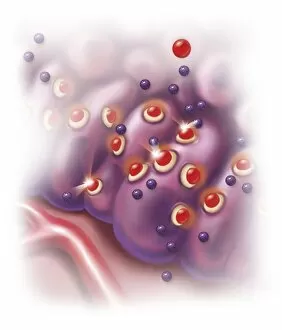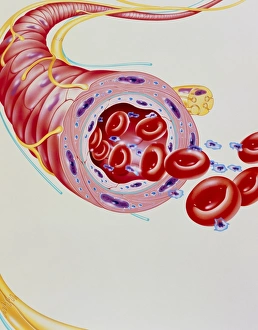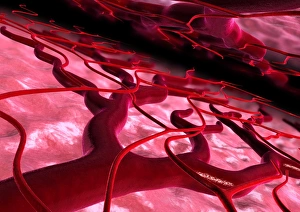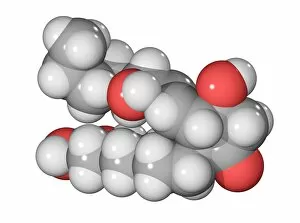Vasodilation Collection
"Vasodilation: Unveiling the Intricate Mechanisms and Systemic Effects" Surrounding tissue becomes inflamed causing several systemic effects
All Professionally Made to Order for Quick Shipping
"Vasodilation: Unveiling the Intricate Mechanisms and Systemic Effects" Surrounding tissue becomes inflamed causing several systemic effects, as the body's intricate response to injury or infection unfolds. This captivating process, known as vasodilation, holds the key to understanding how our bodies combat various challenges. One crucial player in this symphony is histamine, a chemical released during allergic reactions. Antihistamines step in by binding to histamine receptors and blocking the cascade of events that trigger an allergic reaction. By doing so, they help prevent surrounding tissue inflammation and alleviate symptoms. Enter Prostaglandin I2 drug molecules F007/0185 and F007/0184 - these remarkable compounds possess potent vasodilatory properties. They act on blood vessels, promoting their relaxation and widening arterioles for improved blood flow throughout the body. An awe-inspiring artwork showcases an alpha-blocker drug dilating an arteriole with precision. But it doesn't end there. Computer-generated imagery beautifully illustrates blood vessel dilation itself – a mesmerizing sight where vessels expand gracefully like blooming flowers. This expansion allows increased delivery of oxygen-rich blood to tissues in need while facilitating waste removal from those areas. The story continues with other critical players such as Atrial Natriuretic Peptide (ANP), Brain Natriuretic Peptide (BNP), Prostaglandin F2a molecule, Prostaglandin E1 molecule, and Prostaglandin E2 molecule – all contributing their unique roles in regulating vascular tone through vasodilation. These molecular marvels work tirelessly behind the scenes; ANP helps regulate fluid balance by relaxing smooth muscle cells lining blood vessels while BNP aids in reducing excessive fluid volume within congested hearts. Meanwhile, prostaglandins E1 and E2 exert their influence on vascular walls by inducing relaxation and widening them further.









